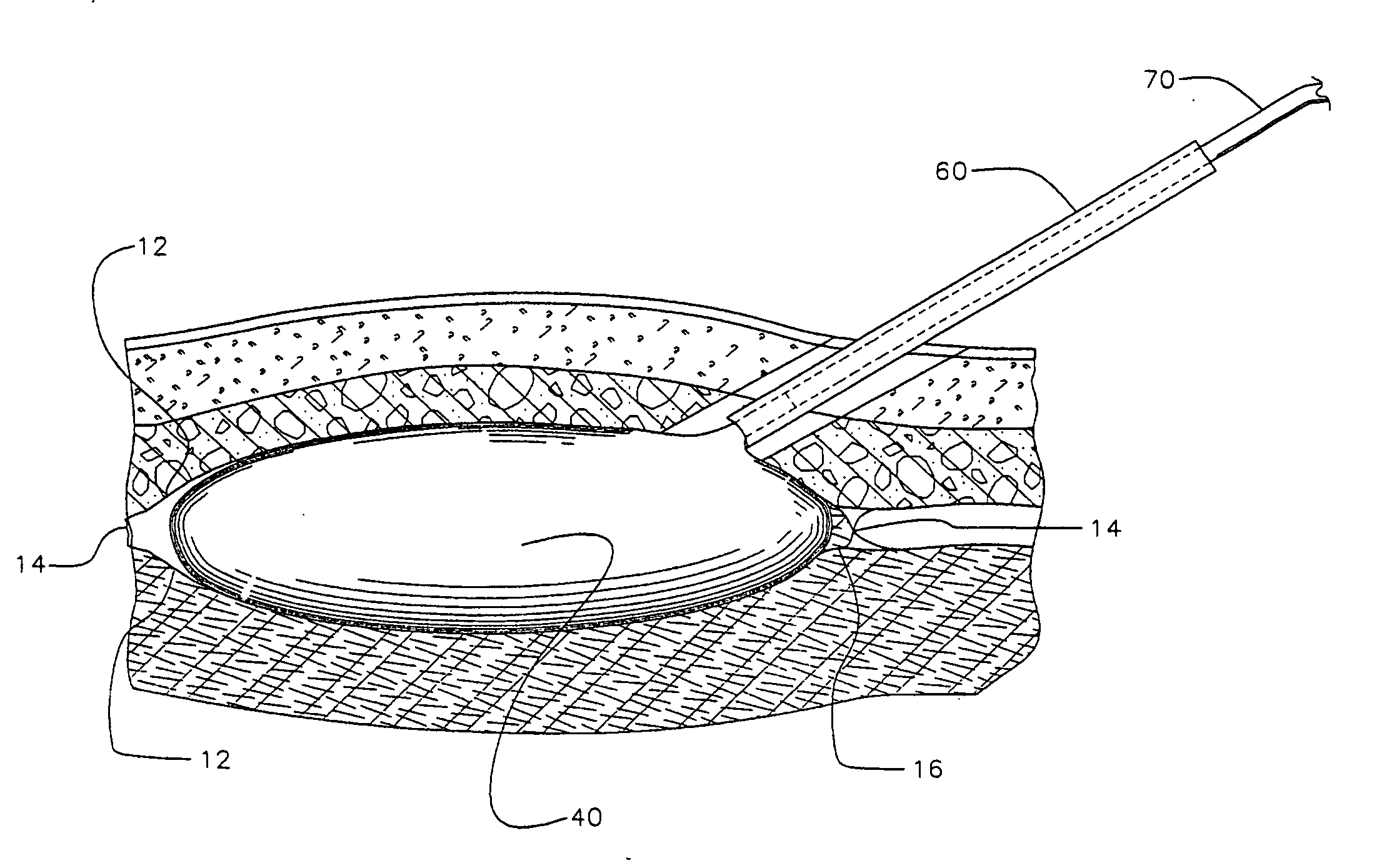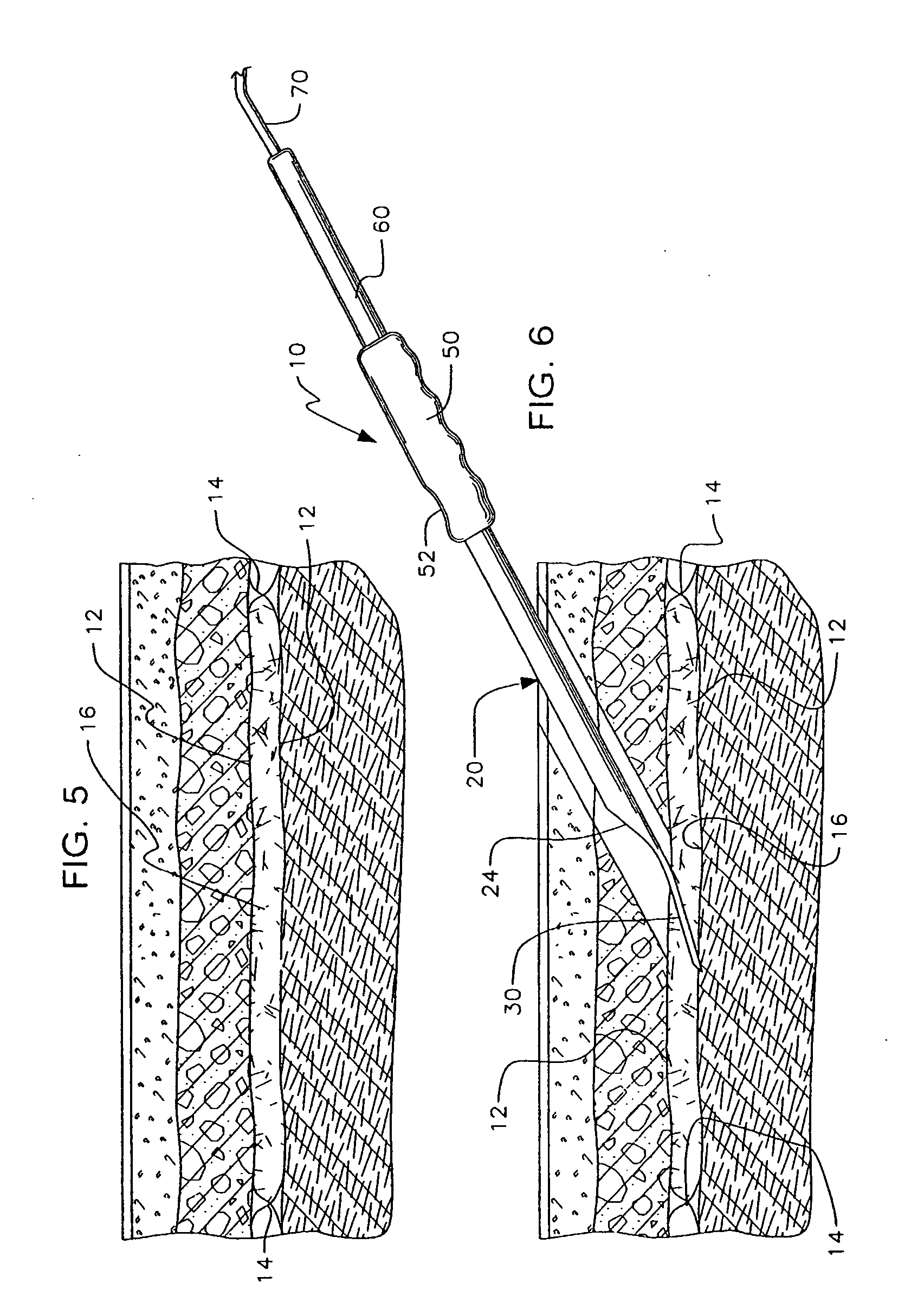Apparatus for use in fascial cleft surgery for opening an anatomic space
a technology for anatomic space and surgical equipment, applied in the field of surgical equipment for opening an anatomic space, can solve the problems of long scar, unnecessary damage, and cover the entire chest, and achieve the effect of convenient and efficient manufacture and marketing
- Summary
- Abstract
- Description
- Claims
- Application Information
AI Technical Summary
Benefits of technology
Problems solved by technology
Method used
Image
Examples
Embodiment Construction
[0058] With reference now to the drawings thereof, the preferred embodiment of the new and improved surgical apparatus for use in fascial cleft surgery for tissue dissection wherein a balloon device performs the function of tissue dissection in a minimally invasive manner embodying the principles and concepts of the present invention and generally designated by the reference numeral 10 will be described.
[0059] The present invention, the surgical apparatus 10, is comprised of a plurality of components. See FIG. 1. Such components in their broadest context include an applicator, an elastic dissection balloon movably positioned within said applicator and a hollow introducing rod slideably positioned within said applicator for positioning said dissection balloon exterior said applicator to within an anatomic space for subsequent inflation and deflation. Such components are individually configured and correlated with respect to each other so as to attain the desired objective.
[0060] Th...
PUM
 Login to View More
Login to View More Abstract
Description
Claims
Application Information
 Login to View More
Login to View More - R&D
- Intellectual Property
- Life Sciences
- Materials
- Tech Scout
- Unparalleled Data Quality
- Higher Quality Content
- 60% Fewer Hallucinations
Browse by: Latest US Patents, China's latest patents, Technical Efficacy Thesaurus, Application Domain, Technology Topic, Popular Technical Reports.
© 2025 PatSnap. All rights reserved.Legal|Privacy policy|Modern Slavery Act Transparency Statement|Sitemap|About US| Contact US: help@patsnap.com



